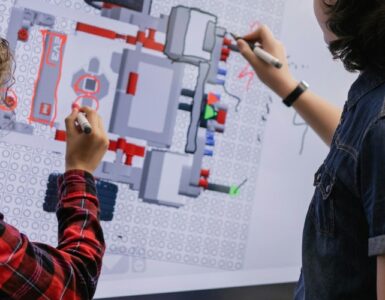STEAM education is an extremely underrated learning curve that most people do not consider as part of their formal education. In fact, STEAM education helps students to think more holistically, and not in binaries that might restrict more innovative means to think about solutions to problems. Moreover, considering as much as technology is developing right now, an addition of humanities could aid in a more conscious and constructive development of technology in the future. Find out how here.
Conscious Technology Development
While Neuralink has been on everyone’s mind in 2024, with its first test subject successfully playing chess, which was not possible for him before, it defintely seems like a good investment decision, which also can help people. However, the other side of this technology is what people in production of this tech must also consider. There is plethora of literature available on how major corporations lead the way to disastrous consequences, and a little precaution while developing such world-shaking tech must be taken. STEAM allows students to integrate this thinking from all sides approach while developing more conscious technology.
No More ‘One Solution for All’ Approach
Gone are the days when a single technological solution could address the diverse needs of a global population. Take, for instance, medical technologies like prosthetics. Traditional designs often fail to accommodate the varying needs of users due to a lack of personalization. Imagine if engineers collaborated more closely with artists and human-centered designers to create prosthetics that not only fit better but also reflect the user’s personal style and preferences. This cross-disciplinary approach could lead to more effective, personalized solutions that truly enhance quality of life.
Accessibility Oriented Tech
Accessibility is no longer just a nice-to-have feature but a crucial aspect of tech design. Think about voice-activated assistants like Siri or Alexa. While these tools are revolutionary for many, there’s still significant room for improvement in how they serve diverse user needs. Integrating insights from humanities and social sciences could lead to more nuanced voice recognition that understands different accents and speech patterns, making technology more inclusive for everyone. By emphasizing accessibility, we ensure that technological advancements benefit a broader range of users.
Solution Oriented Tech
When it comes to problem-solving, a solution-oriented mindset is key. Consider smart home systems, which aim to make daily life easier through automation. However, many of these systems still struggle with user experience issues, like complex interfaces or lack of intuitive control. By incorporating principles from the arts and design thinking into the development process, we can create more user-friendly interfaces that cater to diverse user needs and preferences, leading to technology that’s not just smart but also genuinely helpful.
Understanding the Big Picture
Technological advancements often come with unintended consequences. For instance, social media platforms have revolutionized communication but also contributed to issues like misinformation and privacy concerns. A STEAM approach encourages a broader perspective, integrating ethical considerations and social impact into the design process. By understanding the big picture, technologists can develop solutions that not only advance innovation but also address potential negative outcomes, fostering a more responsible tech landscape.
Critical Analysis
Critical analysis is crucial for refining technology. Consider autonomous vehicles, which hold the promise of reducing traffic accidents but face ethical dilemmas, like decision-making in unavoidable crash scenarios. By applying critical analysis through a STEAM lens, which includes ethical philosophy and social science perspectives, we can better navigate these complex issues and develop technologies that align with societal values and ethics.
Incorporating STEAM education into technology development isn’t just about blending different disciplines; it’s about crafting solutions that are more thoughtful, inclusive, and effective. As we continue to push the boundaries of innovation, let’s ensure we’re not just advancing technology but also enhancing the human experience.








